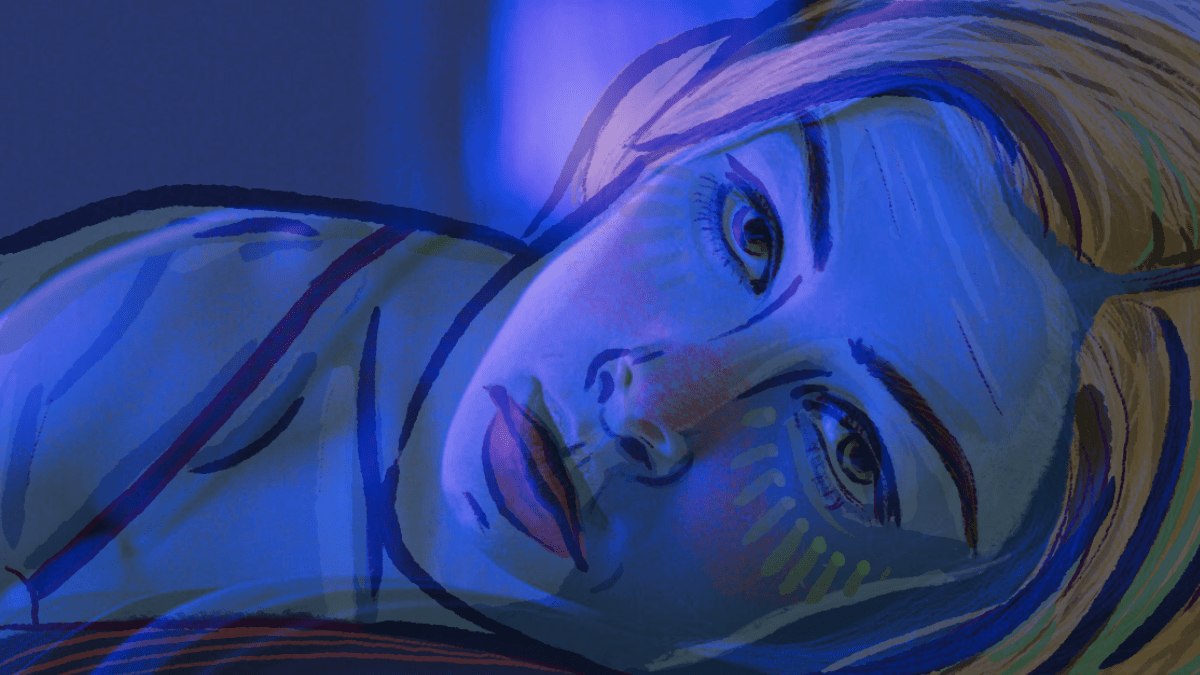Women Written by Men: “The Cool Girl” trope

In a patriarchal society, a male-controlled and male-centered system is taking place and inevitably values masculinity over femininity. Through capitalism, the macho culture continues to be present in the form of film and television shows. To satisfy male fantasies and seek their approval, a character trope was born in various movie plots— “the cool girl”.
It is first called out in the 2012 bestseller book and feature film Gone Girl written by Gillian Flynn. A cool girl is one of the guys, whatever the male protagonist’s likes and dislikes are synonymous with hers. She’s easygoing, profane, raunchy, and effortlessly hot. The most noticeable aspect of her is that “she’s not like other girls.”
The Cool Girl: A Myth
“Cool girl. Men always use that, don’t they? As their defining compliment. She’s a Cool girl. Cool girl is hot. Cool girl is game. Cool girl is fun. Cool girl never gets angry at her man. She only smiles in a chagrin loving manner and then presents her mouth for fucking. She likes what he likes. So, evidently, he’s a vinyl hipster who loves fetish manga. If he likes girls gone wild, she’s a mall babe who talks football and endures buffalo wings at Hooters. Go ahead, shit on me, I don’t mind, I’m the Cool Girl.” — Gone Girl
From this deconstruction, this character’s DNA clearly showed versions of men packaged in a hot female form. She is the direct mirror of this bro-y temperament who enjoys masculine activities commonly associated with strength and power. Most saliently, the Cool Girl isn’t real, she’s a myth, a woman written by men and perpetuated by women pretending to be her.
Gone Girl investigates the toxic fallout of women feeling they have to perform this fantasy. This character in various films, is nothing but an accessory to the male protagonist. She also will have almost no arc outside of what happens to her love interest. Another problem perpetuated by this trope? The Cool Girl in her essence is inherently misogynistic. It puts down another type of girl, the “girly girls”.
The impossible standard
It’s a phase.
Most women during their young adulthood pretended to be “one of the boys”. However, some of them are genuinely passionate about male activities, this doesn’t have to be some kind of calculated act. Women who come off as cool girls can be positive role models. It’s great to see them show off their sassy wit, or embrace a goofy, unpolished, no-filter approach. The real problem lies with the “cool girl” requirement of being hot or good-looking.
We have witnessed this in Miss Congeniality, FBI agent Gracie starts with all the Cool Girl qualities, but this just makes her the butt of the jokes of her male coworkers. It’s only after her makeover – when she’s revealed to be gorgeous – that her quirky, masculine characteristics are received as charming. So, without this prerequisite of hotness, being a badass or a tomboy would not be viewed as cool at all. It erases women’s individuality — terrible storytelling and characterization.
The Deconstruction: Cool Girl in Movies and TV
Countless shows and movies throughout the decades have used a cool girl to be the guy’s ultimate dream. Flynn took inspiration for her commentary from the 1998 romcom, “There’s Something About Mary”. The whole premise of the film is how wild Mary drives every man she meets — and that makes sense when you consider this woman is simply a bundle of male fantasies with a pretty face.
Transformers exhibited the epitome of the trope with Megan Fox’s Michaela, a classic combination of hot girl and cars. Starting in 2010 in the MCU, Black Widow became beloved in a male-heavy space by looking like Scarlett Johansson while being “one of the guys”. She offers a supportive presence in the other Avengers’ lives without outshining them.
Photo from The Take
In How To Lose a Guy in 10 Days, Andie drives a guy away by pretending to be the uncool girl — an ultra-feminine, hyper-sensitive, needy woman. The film makes a grotesque joke out of Andie’s fake girly behavior (which she models after the unlucky-in-love Michelle character) but it never questions why men should be so automatically put off by a woman who’s not effortlessly detached and undemanding.
In Philippine Cinema, we have also watched this trope played out in films and teleseryes (TV shows) wherein the female character is usually “one of the boys”. In fact, in Julia Barretto’s film “Vince, Kath & James”, she played this cool girl – an engineering student and a beauty queen who attracted the two male lead characters. Also, action movies in the 80s and 90s often used a cool girl for the male gaze, while supporting the male lead in his journey.
Why it’s ruining our reality
The cool girl may appear superficially edgy, but she’s only cool so long as she’s comforting – not challenging – to men. This captures the idea that the cool girl is only desirable as long as she stays on her guy’s level and doesn’t surpass him either in aptitude or passion. She can’t be too intense about anything, if she becomes this strong woman, the male protagonist will no longer have control over her.
@thisisthetake she’s cool… until she has her own opinions #CoolGirl #CoolGirlTrope #MovieTrope #TVTrope #NotLikeTheOtherGirls #Friends #RossGeller
♬ Calling My Name-JP – Pandicio Del Toro
While Black Widow is humble enough for Avengers fans, Captain Marvel was mocked for being strong than all of the heroes. The Cool Girl does not attempt to indicate that the current man-woman hierarchy is flawed. One of the most jarring lines in Flynn’s Gone Girl monologue is: “Go ahead, shit on me. I don’t mind, I’m the cool girl.” This exemplifies this type’s utter passivity, and one of this persona’s requirements is that they never get angry which means she never tries to make a difference or change anything.
What can we do to alter this trope?
We need characters with individuality.
Also, accurate representation of women will be attained if there is equality in the film industry for female writers. By focusing more on the development and arcs of the characters at the center, the less they’ll feel like stale archetypes with no part of reality. It will possibly eradicate the stereotypes, sexism, male gaze, and misogynistic approach in these films and tv shows.
@thisisthetake Is the “girly girl” trope finally evolving? #GirlyGirl #Girly #Tropes #film #TV #filmtok #tvtok #womeninmedia #pink #DoritosDuetRoulette
♬ Dialed In – Chris Alan Lee
Although, in recent years this character trope is constantly evolving as the persona appears to be changing for the better. More modern iterations of the Cool Girl largely depart from her traditionally passive and submissive roots.
Today’s cool girls freely express themselves on important issues; perhaps most promising, many of today’s examples appear to be performing coolness to appeal to both men and women. The true emancipation of the cool girl, however, will only come when she stops striving to fit in a man’s world and instead works to create a society where women are free to be whoever they want to be and do whatever they want — a true and new definition of cool.






